Sections of the site
Editor's Choice:
- How to unlock ariston washing machine
- Pros and cons of LED lighting
- Pulse relay: device and connection
- How to calculate the illumination of a room with LED lamps?
- Plastic box - do-it-yourself aesthetic view of electrical wiring
- Electricity consumption of a warm floor: electric and film
- Installing a pump in a well: how to properly install pumping equipment
- Electrician Toolkit Overview
- How to choose a water heater: the most complete list of evaluation criteria
- 1 acoustics on the example of Sven SPS-860 and Realtek ALC889 codec
Advertising
| What is better difavtomat or ouzo |
|
When creating or reconstructing an intra-apartment or home electrical network, it is not enough to be limited only to laying wires (even if of the required section) and placing sockets and switches convenient for everyday use. Particular attention should always be paid to the safety measures for the operation of both the network itself and the household appliances connected to it. Sad statistics show that up to a quarter of all registered fires occur for reasons related to a malfunction or imperfection of household "electrical facilities". And in the reports of incidents, there continue to be reports of tragic cases from electric shock to people when using lighting fixtures or home appliances. In order to protect both himself and his household, to ensure the safety of housing and all property in it, the owner is simply obliged to provide for the installation of special protection devices. Nowadays, several of their varieties are offered - these are circuit breakers that replaced fuses, residual current devices (RCDs) and differential automata. And for those who first dealt with this problem, the question often arises - what is better difavtomat or RCD? Let's try to answer it. It is clear that taking on electrical installation on your own, without having the skills, is a gamble, and, sometimes even very unsafe for life. But it is useful for everyone to know such questions, although would from those considerations so that you can correctly plan the "budget" for the renovation of the home network. Yes, and it will be easier to communicate with an invited electrician, since many of these amateur craftsmen are big fans of “hang noodles” on ignorant owners in order to rip off extra money. And in order to be able to compare a differential automaton with an RCD, it is probably necessary to have at least a little idea about their structure and functions. Devices that ensure the safety of home electrical networks and their individual sectionsWhat levels of protection should be provided in home electrical networksTo be absolutely precise, the heading in the title of the article is not quite correct. Let's put brevity aside and try to formulate it differently. So, what is better to use to provide the necessary levels of protection - a differential machine or a combination of a circuit breaker with a residual current device (RCD)? That is why the first illustration of the article is made as it is, and not otherwise. Second Amendment. The question is not, probably, about what is better in terms of reliability in operation and ensuring the required security. Both options are equally effective, and they have to be compared according to completely different criteria, which will be discussed below. But to start for those readers who do not have a clear enough understanding of the purpose of these useful devices should at least give some explanations on their design and operation. So, what are the main "troubles" can expect consumer during the operation of home electrical wiring.
As a result, this always leads to strong heating of the wires, causing melting of the insulation or even the plastic housings of sockets or household appliances. It is quite clear that such a situation can easily lead to an open fire.
The melting of the insulation, of course, becomes the cause of the appearance of a short circuit with all its "charms". A special danger of this phenomenon lies also in the fact that a violation of the integrity of the wiring can occur in a hidden area, and the consequences can be completely unpredictable. By the way, overload mode sometimes happens and not through the fault of the owners. There are situations when malfunctions of consumption devices lead to such consequences. For example, an inter-turn short circuit in the winding of an electric motor or some partial violation of the integrity of the heating element of an electric heater. So, it is quite obvious that an emergency shutdown system should be provided for when the line is overloaded.
Even under conditions of timely protection operation, a short circuit can lead to a fire hazard. It's scary to even imagine how this state of emergency could end if the line remains switched on. There are many possible reasons for a short circuit. - It may be poor-quality or worn-out wiring insulation over time. - It is clear that one of the frequent causes is the overload of the line already discussed above with the melting of the insulation. — Accidental contact of foreign objects or substances with conductive parts. - Carelessness, mistakes or completely illiterate actions during the installation of house lines. - Gross violations of the rules for the operation of devices. - Breakdowns of household appliances (for example, wear of electric motor bearings or mechanical damage to wires and contacts located inside) or failure of elements of electronic or electromechanical circuits of devices. As can be seen from the above, it is simply impossible to predict all the reasons in advance. And, therefore, it is necessary to provide protection that would instantly break the power line in the event of a short circuit.
This is explained by the fact that the insulation of conductive elements is far from always ideal in itself, that is, even in a completely new unworn condition. Plus, over time, it ages, somewhat wasting its dielectric qualities. The situation can be aggravated by periodic overloads of the lines, which have already been described. As a result, the electric current finds its way to spread - through the metal cases of household appliances, grounded pipes of heating or plumbing systems, along the reinforcing cage of reinforced concrete, and sometimes even along wet plastered wall surfaces. And when touching such objects or structures, a person can close the circuit through himself.
2 is a schematic representation of the insulation resistance. 3 - the metal case of a household appliance or a part of a building structure. The main danger in domestic conditions is the possible defeat of a person by electric current. Probably, many have encountered the phenomenon when, when touching a washing machine or dishwasher, an electric stove or oven, and sometimes even plumbing fixtures, an unpleasant effect of electricity is felt. This is already a sign of extremely high danger! Safe for humans at a voltage of 220 IN a current strength not exceeding 1.5 mA is considered - it is at such indicators that the effect is already beginning to be felt. At currents of the order of 2 ÷ 7 mA, convulsive reactions of the fingers and hands occur, and at 10 and above, a person is no longer even able to independently tear his hand away from the conductor (conductive surface). And the longer this contact, the lower the resistance of the human body, and the higher the likelihood of irreversible consequences.
Leakage currents are especially dangerous in rooms with high humidity - the conditions themselves contribute to high conductivity. And kitchens, and bathrooms in modern houses and apartments are literally crammed with electrical household appliances and appliances. It is extremely difficult to deal with the occurrence of leakage currents. Moreover, no one is immune from the fact that a completely safe, for example, dishwasher will not become a source of real threat tomorrow. This means that a device is needed that could instantly turn off the power supply if, when touched with the device, the leakage current reaches dangerous values. All three of these major hazards are taken into account when designing protection devices. Circuit breakersThese compact, modular devices have replaced the once ubiquitous fuses - "plugs". The direct purpose is to protect the internal intra-apartment network or its dedicated section from overload and short circuit.
The purpose of this publication is not to discuss in detail the circuit breaker device, as well as other devices. Therefore, we restrict ourselves to a brief description and the principle of operation. A modern circuit breaker has a modular design, enclosed in a compact plastic case. From the front there is a handle for turning on the circuit, from the back - a special groove with a latch - for fixing the switch on the DIN rail. Any circuit breaker is designed for a certain rated load current. Its value must be indicated on the body of the device.
Contact closure is ensured when the handle is moved to the upper position. A special mechanical engagement device (a set of levers and stoppers) ensures fixation in this position. But there are two levels of operation for opening contacts. One release has a bimetallic (thermal) principle of operation, the second - electromagnetic. So, the passage of current through a conductor is always accompanied by the release of a certain amount of heat. If the value of the current passing through the circuit breaker exceeds the nominal value, then the bimetallic plate, heating up, begins to bend. At a certain level of bending, the contact release mechanism is activated, and the load line is de-energized. The second, electromagnetic "line of defense" is short circuit protection. This is an induction coil. with a metal core located inside, held in the “working” position by means of a spring. That is, at normal current values, the induced electromagnetic field is not enough to move the core of this solenoid. If a short circuit occurs on the line, then the value of the current passing through the switch increases many times over. Accordingly, the intensity of the electromagnetic field created by the induction coil also increases sharply. The core, overcoming the resistance of the spring, is drawn inward, thereby activating the free trip mechanism. The opening of contacts at high current strength is accompanied by the formation of an electric arc. This is provided for in the design - a special chamber with metal plates crushes and extinguishes the arc, and the gas formed during its short burning is discharged through a special channel. So, the circuit breaker will protect the line from overload above the nominal and from short circuit. He does not know how to deal with leakage currents. Residual current device (RCD)To protect against leakage currents, a completely different device is used. Its correct name is a differential switch (DV), and the operation of this device is based on comparing the current strength at the input and output.
The main "working body" of the RCD is a current transformer with a toroidal core, on which the windings are placed. Two of them are on the conductors L and N (let's conditionally call the input to the load and the output from it), equal in their parameters. And one more - control, connected either with an electromechanical relay or with an electronic key. In the normal position, in the absence of leakage, the input and output windings create magnetic fluxes of equal magnitude, but directed in the opposite direction. Accordingly, they compensate each other, and the total magnetic flux in the toroidal core is zero. If a leakage current appears (for example, a person touches a household appliance with damaged insulation), then the magnetic flux on the output winding becomes less than the input. There is no mutual compensation, and the resulting electromagnetic flux appears in the core, which induces an EMF on the control winding. The current that has arisen in it causes the operation of an electromechanical relay or an electronic key, breaking the load power supply circuit. The response time of a serviceable RCD is usually within 0.2 ÷ 0.3 seconds. Differential switches, depending on their type, can respond to AC or DC (pulse current) leakage. The characteristics of the device must indicate the nominal leakage current (that is, the difference between the input and output values) - usually it is 10, 30, 100, 300, 500 mA. For most household appliances, RCDs with a rating of 30 mA are selected, and if they are located in rooms with high humidity or in children's rooms - 10 mA. Differential switches with higher ratings already have a slightly different purpose - not to protect a person from electric shock, but to prevent the occurrence of emergency situations with high leakage and the likelihood of fire, that is, they are installed common on the input lines in switchboards. We emphasize once again the feature - residual current devices set the necessary level of safety from the effects of leakage currents. But they are completely "helpless" with regard to power line overload and short circuit. Thus, the use of RCDs is mandatory in conjunction with circuit breakers. Only in this case will the necessary level of protection be provided. Differential machinesThese devices can be called the most advanced of those listed, since both the circuit breaker and the RCD are assembled in one case. And, the compactness of such difavtomatov (quality, of course, from leading manufacturers) does not affect the reliability of the protection created.
To be more precise, then the full name of these devices is a residual current circuit breaker (RCB). This abbreviation is very often placed on the front panel of the device. In addition, the main characteristics are indicated on the differential machine itself or in its passport. This, by analogy with a circuit breaker, is the rated load current (with a letter index at the beginning, indicating the time-current characteristic of the device operation). And the value of the leakage current in mA, as it is accepted on the RCD. It would seem - here it is, the optimal solution! However, not all so simple. Yes, the difavtomat will fully ensure the reliability of the line, but the expediency of installing it is sometimes in doubt. Therefore, in the next section of the article, we will just move on to a versatile comparison of the advantages and disadvantages of possible options: using an RCD in tandem with a circuit breaker or a differential circuit breaker. What is better to put: RCD + circuit breaker or differential circuit breaker?So, we proceed from the fact that the performance characteristics of the devices are equal, that is, they equally provide effective protection against the above emergency situations. What take up more space?Yes, let's start with the most obvious. Sometimes the dimensions of the switchboard do not allow ignoring this issue. And the installation of a more spacious cabinet is either completely impossible based on the dimensions of the available space, or is associated with serious repair and finishing work, which there is no desire to do.
Here - everything is simple. "Duet" circuit breaker + RCD will take 3 module-places on the DIN rail. And the differential automaton, which performs exactly the same functions, is only two. It seems to be empty. Perhaps so, but only if we are talking about protecting just one line. But a good host who cares about security will distribute the network over several dedicated lines. For example, a separate line to a washing machine (with a machine 16 A, RCD 25 A ΔI=30 mA), a group of sockets in the kitchen - (16 A, RCD 25 A ΔI=30 mA) and in the bathroom (10A, RCD 25A ΔI=10 mA). If this scheme is implemented with automatic machine + RCD pairs, 9 module-places will be required on the din-rail of the switchboard. Quite a lot.
The same circuit, but with the use of differential automata, will require only 6 module-places, and for a small switchboard this difference is very noticeable.
By the way, at present, differential automata of even a single-module design can be found on sale. They are, of course, much more expensive, but they can significantly save space in the control cabinet. What is easier in electrical installation?This selection criterion is not so significant, but still. In principle, the installation itself is not complicated in any case - all devices of this purpose have convenient screw terminals that provide reliable contact. Installing any switch on a DIN rail is also not difficult. The difference is only in the number of communication connections and in the greater "stuffing" of the cabinet's internal space with additional jumpers. For comparison, the diagram below shows the switching of a pair of AB + RCD and a separate RCBO.
- at the entrance automatic switch, a phase wire is connected. From the output, a piece of wire is switched to the input L of the RCD. And then, from the output terminal of the RCD - the phase wire goes to the payload. - The zero wire is connected to the corresponding terminal N of the RCD, and then - the output towards the load. Togo, six terminals and one jumper.
It is clear that the difference is small, and for an experienced installer, any of the options will not present any difficulties. Nevertheless, the circuit is simpler, and there are fewer jumper wires in the cabinet space. Diagnosis of problems in the electrical networkAny of the protective devices under consideration is designed to operate, that is, to open the circuit in the event of certain malfunctions or emergencies. But here, let's say a trigger has occurred, and you need to determine its cause.
In fairness, it should be noted that some models of differential automata are equipped with a kind of indicator that can indicate which of the circuits (by leakage or by overload) caused the protection to trip. But the cost of such RCBOs is certainly higher. Maintainability of the assembled circuitYou can never exclude the possibility that, for one reason or another, the protection device itself will fail. it will need to be replaced, and, alas, the differential automaton loses significantly by this criterion. In the event of a breakdown of any of the devices in the RCD + AV bundle, it will be enough to replace only the faulty one - this will not affect the performance of the "partner". In the worst case scenario, the acquisition of each of them is much cheaper than buying a differential machine. If it came out failure of any of the protection levels difavtomat, the device will have to be replaced completely. And this sometimes happens. For example, there are frequent trips seemingly for no reason, with a clearly non-congested network line. And the test button works quite normally, that is, the “built-in” RCD is working properly. Most likely, the problem lies in the thermal protection circuit (the bimetallic plate does not work correctly). But this will still require the purchase of a very expensive new RCBO. Financial IssuesTo a certain extent, we have already touched on this issue in the previous paragraph. But that was a force majeure situation. And now let's consider from the point of view of planning a "budget" for the creation or reconstruction of a home electrical network. The acquisition of reliable protection devices (especially RCDs and RCBOs) is quite expensive. Especially if you focus on really high-quality products of leading brands. These include, for example, Schneider Electric, Legrand, ABB, General Electric, Siemens. The budget and, alas, not always justifying options include products "DEKraft", "IEK", "Kontaktor". There are also not known at all no brand, which should be treated with special biased caution, since the benefit in the cost of the purchase will be incomparable with the consequences that the incorrect operation of cheap automation can lead to.
So it’s worth thinking carefully about whether to purchase once and for a long time guaranteed high-quality devices, and after that “sleep well”, or go “on the path of least resistance”, but at the same time the owner will constantly “gnaw” a feeling of some kind of uncertainty. Just as an example, to compare the costs of RCD + AV and RCBO, let's take the Legrand models with prices from a company store in Moscow.
Well, if there are prices before your eyes, and the scheme for distributing the general network into separate lines has already been clarified, it is easy to calculate the accounting itself. For example:
Since the power of the machine is 2 kW, it will require a circuit breaker with a rated current of 16 A. The maximum leakage current to operate the protection will be 30 mA, since the device will be installed in a dry room (not in the bathroom). We look at the price list and calculate: - The cost of a circuit breaker for 16 A is 157 rubles. - RCD with a rated current of 25 A (this indicator must be a step higher than the circuit breaker rating!) And with a leakage current of 30 mA - 1136 rubles. In total - about 1300 rubles. If you install a differential machine, then its cost at a rated current of 16 A and operation with a leakage of 30 mA is 2290 rubles.
It turns out almost 1000 rubles more expensive. But at the same time, as already mentioned, less space is occupied in the shield, installation is easier. In principle, at this level, the difference in total costs is not yet so tangible, and it is quite possible to accept both options. By the way, when laying single lines, many masters prefer just such a solution - a differential machine.
But that's not all. As a rule, RCDs are not installed on each line, as this looks too wasteful. Usually they are divided into groups of 2-3 lines with similar operational parameters. The safety of such a group will be provided by one RCD and individual circuit breakers. The cost of AB, as we can see, is low, so this approach gives a very impressive savings effect. True, at the same time, it is not recommended to “enlarge” groups too much in order to further reduce costs. The fact is that the total current leakage on several lines, in principle, completely harmless individually, together can cause frequent protection trips for almost no apparent reason. In addition, a leak on any one device will cause a large number of lines to be disconnected at once, which is extremely inconvenient and in operation, in diagnostics faults. Agree, it's not pleasant to sit in darkness in the living roomif the RCD tripped, say, from a current leak on the dishwasher. - six automatic switches 16A-6 × 157 = 942 rubles. - three pieces of RCD 40 A / 30 mA (40 A, since two 16 A machines are connected) - 3 × 1540 = 4620 rubles. In total: 942 + 4620 = 5562 rubles.
For comparison, you can determine the "unit cost" of one line - it is equal to 927 rubles. Significantly less than with a single connection. If we replace the RCD with six differential machines with a nominal value of 16A / 30 mA, then the amount will be frightening: 6 × 2290 = 13740 rubles. It is clear that the "unit cost" of each line is equal to the price of the RCBO itself.
And there is nowhere to go - each line requires its own difavtomat. If we consider the breakdown of lines into groups, with the installation of one RCBO and two ABs to it, then in general it turns out to be complete nonsense. It turns out that the functionality of the difavtomat is curtailed, and it becomes an ordinary RCD. So isn't it easier and cheaper to install an RCD? After all, the effect will be the same. By the way, pay attention to one more nuance. In the last two schemes considered, the use of differential automata did not give any gain in modulo-places. In both options, twelve seats are involved. In a word, when installing a shield with leads to several independent lines, it seems more expedient in terms of costs to use RCDs, broken down into groups, and “personal” circuit breakers for each line. Installing differential automata does not provide any advantages, but it is much more expensive. So, in the publication, a comprehensive comparison was made of the advantages and disadvantages of using differential automata and “tandems” of RCD + circuit breaker as protection for electrical in-house or apartment lines. Everyone will draw conclusions for himself - there is enough information for this. The article intentionally did not provide the rules and diagrams of electrical installation. This is very serious question that requires a separate detailed consideration. Here are some tips on where you can read about it.
And at the end of the publication, we suggest watching a video that is directly related to the topic of our conversation today. Video: RCD or differential machine - which device should be preferred? |
New
- Kievan Rus: education and history
- What vitamins are good for facial skin?
- Rudbeckia is spinous. Rudbeckia is a perennial. flower planting technology
- Secrets of losing weight by Ksenia Borodina What pills did Ksenia Borodina take for weight loss
- Kuriles: history with geography History of the disputed Kuril Islands
- Beer styles: porter and stout, lager and ale
- The optimal temperature for each stage of the distillation of moonshine and mash
- Rye malt and what can be done with it?
- How to make fortified wine at home
- How to make wine yeast at home, instructions for use





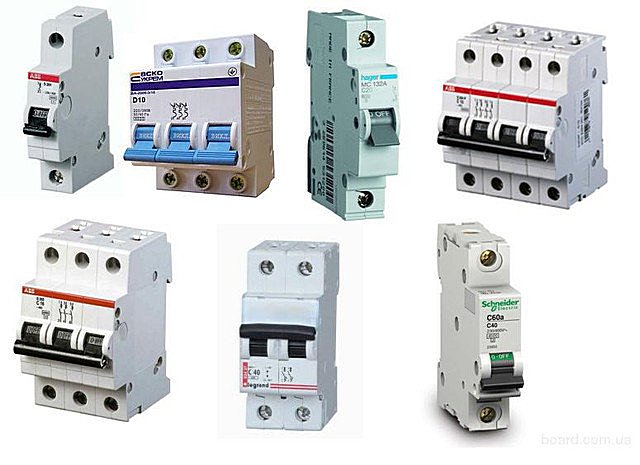

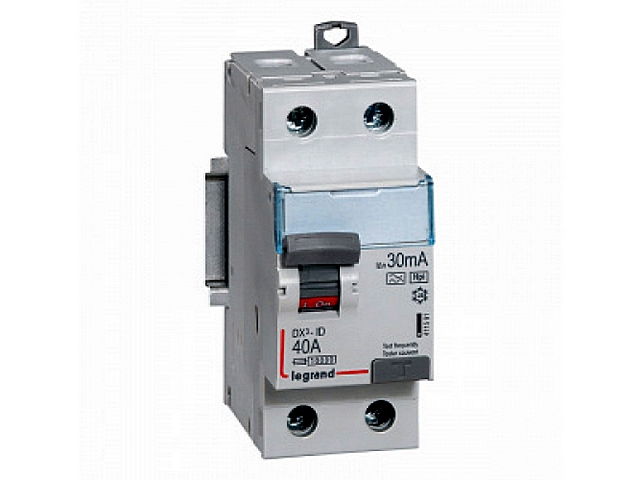



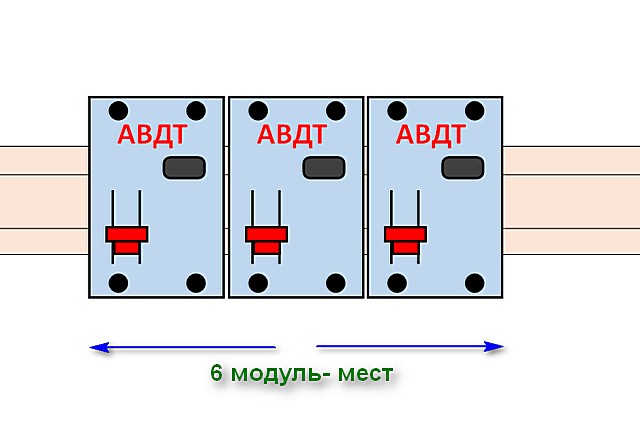
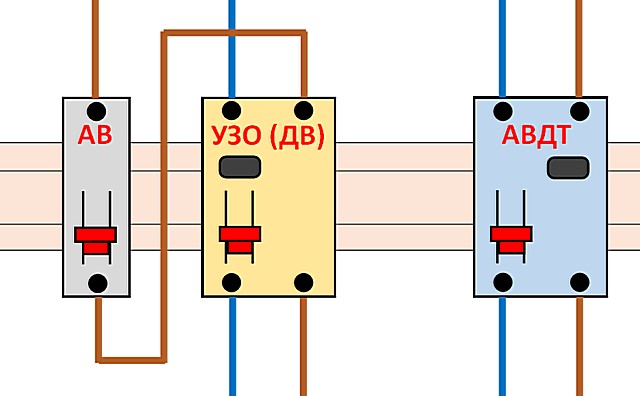



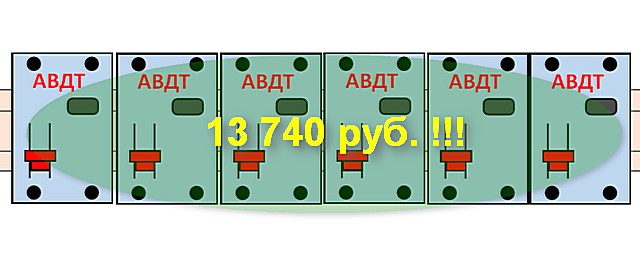
 The task of increased complexity and responsibility is the correct organization of household "electrical facilities"
The task of increased complexity and responsibility is the correct organization of household "electrical facilities"




